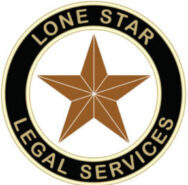Living Revocable Trust
Frequently Asked Questions/Answers
Avoiding Probate
Assets Re-Titled in the name of a Trust do not go through a formal Probate Court process which allows for assets to be transferred to beneficiaries. Trusts are contracts and unlike Wills are immune from going into Probate. The Court recognizes the details of the Trust and honors the contract. Wills however usually go into Probate if there are large assets such as real estate, retirement or investment accounts.
Distributing Assets
Assets in a Trust must be legally distributed according to the wishes of the creator of the Trust (Trustor). Beneficiaries are set up in a Trust which allows for flexibility of how the funds or assets are distributed. A Trustee is established to manage the estate and is responsible for the distribution of assets to beneficiaries after the Trustor is deceased.
Protection from Creditors
Assets that are Re-Titled in the name of a Trust are protected and sheltered from creditors which are passed onto the Estate’s Beneficiaries. It is extremely important that all high value assets be Re-Titled in the Trust’s name as soon as a Trust is executed to protect from future Creditors.
Managing the Affairs of Your Children
A Trust can be used to appoint Guardians and manage the inheritance granted to Children under 18 years of age, thus avoiding Guardianship Probate Proceedings. Trusts can manage the estates of young heirs well after their 18th birthdays, preventing young beneficiaries from abusing their inherited wealth.
Tax Savings
Trusts reduce the burden of estate taxes and State Property Tax Values can be easily transferred to Surviving Spouse and or Children without fees through a Trust.
Flexibility with Spouses
Trusts can be set up so that assets of a decedent can initially go to a surviving spouse, and then reassigned to beneficiaries (children or other heirs) when the surviving spouse passes away. Conditions can be addressed for Surviving Spouses who remarry and have children with a new spouse for future distributions.
Re-Titling/Transfer of Assets
To obtain the benefits of a Trust, a Trust must be properly funded. Funding a Trust is the process of Re-Titling property and other assets into the Name of the Trust. The following assets are almost always Re-Titled in the name of a Trust; Real Estate, Business Interests, Intellectual Properties, Asset Accounts (Bank, Savings, Money Markets, Stocks, Bonds, Investments, Retirement, etc)
Can I Upgrade or Amend My Existing Trusts
We can update your existing Trust w/New Trust Documents for a fee or We can draft an Amendment that revises your current Trust. We have a flexible Upgrade and Amendment Pricing Structure.
Trust Process & Documents
Process of Initiating a Trust
Client completes the Trust Intake Forms, Relays to Lone Star forms via Email, Fax or Verbally via Telephone. Review Information w/Lone Star Contact, Initiate Payment. Trust Documents are Drafted and Sent via Email to Client for Review. Upon Approval, Trust Documents are Printed via 100% Cotton Paper and Prepared for Client Signing via Notary. Documents are then Scanned and Saved onto Flash Drive and Inserted into Binder w/Tabs then Delivered to Client.
Trust Intake Form
Outline that includes a questionnaire that gathers specific information regarding Trustor, Trustee, Beneficiaries, Advanced Healthcare Agent, Power of Attorney Agent, Medical Questions and Direction, Assets that drives the creation of the Trust Documents.
Memorandum of Trust
Certifies the existence of the Trust and identifies the powers of the Trustee and summarizes some of the more important provisions of the Trust so the Trustee can transact with third parties, such as financial institutions, brokerage houses, stock transfer agents, insurance companies and others, without disclosing all of the provisions of the Trust which is a private and confidential document.
Declaration of Trust
Document that transfers ownership of personal property (title or tangible personal property) to the Trust.
Living Will
Document used to transfer any Non-Trust property to the Trust upon the death of the Trustor and to nominate a Guardian for minor children.
General Durable Power of Attorney
Tool to manage property and personal affairs by appointing an individual to make certain decisions in regards to Non-Trust property interests and personal affairs if the Trustor/Principal becomes incapacitated.
Advanced Healthcare Directive
Document that sets forth the directions and desires for medical care of an individual who has become incapacitated and appoints an agent to make healthcare decisions for that individual.
Durable Power of Attorney for Healthcare
Document that authorizes an Agent that the Trustor appoints to make healthcare decisions authorizes an individual to sign medical documents, waivers and releases if they become incapacitated. Authorizes autopsy, and disposition of remains. Nominates Conservator of the Trustor.
Power of Attorney for Healthcare
Designates an agent to make healthcare decisions for the Trustor through indentifying a list of detailed instructions for End of Life Decisions and identifies Primary Physician.
Medical Information Disclosure Authorization
Medic al Information Authorization Release that allows the Trustor to assign an Agent to gain access to medical records.
Asset Schedule/Statement of Wishes
List of all properties, financial statements along with any and all assets of the Trustor. Specific Statement of Wishes to be relayed to Trustee.
